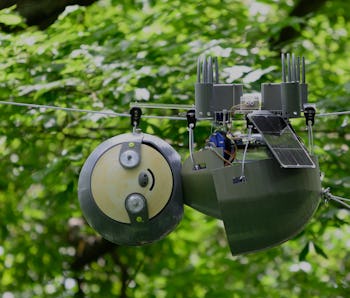Tech
SlothBot is the cutest way to monitor endangered ecosystems
It's slow by design, and that makes it perfect for the job.

Consider the humble sloth. A living meme, innocuous by nature, with places to go but no real rush to be there. The sloth might not be the picture of efficiency as you're used to experiencing it (i.e. fast), but efficient it is. Hyper-efficient, actually. These animals are "strategically slow," as one Georgia Tech researcher put it, expending — and thus, requiring — very little energy.
Oh, just hanging out — It’s that unique characteristic that makes the sloth a good model for conservation robotics. Engineers from the Georgia Institute of Technology tapped into this idea to create a slow-moving robot that can collect environmental data such as temperature and carbon dioxide levels over long periods of time. It moves (only when necessary, of course) along a cable between two trees like the slowest zip-liner imaginable, powered by solar panels.
“SlothBot embraces slowness as a design principle,” said Magnus Egerstedt, a professor at the Georgia Tech School of Electrical and Computer Engineering. “That’s not how robots are typically designed today, but being slow and hyper-energy efficient will allow SlothBot to linger in the environment to observe things we can only see by being present continuously for months, or even years.”
Working hard, hardly working — SlothBot, which features a 3D-printed shell, will be put to work at the Atlanta Botanical Garden’s Canopy Walk for the next few months so engineers can test its abilities. While it will stick to just one, 100-foot cable for its current assignment, the team says it would be able to switch between cables in a larger environment.
Outside of conservation, SlothBot could also be useful in an agricultural setting. But for now, keeping an eye on at-risk ecosystems is top priority.
“SlothBot could do some of our research remotely and help us understand what’s happening with pollinators, interactions between plants and animals, and other phenomena that are difficult to observe otherwise,” said Emily Coffey, vice president for conservation and research at the Garden, in a statement.
“With the rapid loss of biodiversity and with more than a quarter of the world’s plants potentially heading toward extinction, SlothBot offers us another way to work toward conserving those species.”